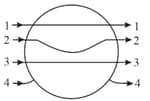Electric Field
Electric Field: Overview
This topic covers concepts such as Electric Field, Inverse Square Law, Electric and Gravitational Field, Electric Field Due to a Point Charge, Electric Field Due to Two or More Charges, Electric Field at a Point in Vector Form, etc.
Important Questions on Electric Field
A charge q is placed at the centre of the line joining two equal charges Q. The system of three charges will be in equilibrium if
Consider a set of equal charges ( each), arranged to form two concentric regular hexagons in the -plane, centred at origin. The edges of the two hexagons have lengths and respectively. They are arranged in such a way that two vertices of each one of them are on the -axis. Suppose that the charges from the vertices at and are removed. Then, the magnitude of the electric field produced by the resulting configuration at the origin is
Consider two semi-infinite flat plates lying parallel to the -plane at and , carrying uniform surface charge densities and , respectively. The plates extend from to and from to . The direction of the electric field at a point whose coordinates are is along
In a conducting metallic sphere of radius , an spherical cavity of radius is made. A charge is kept at the centre of the cavity as shown in the figure. Find the magnitude of the total electric field at
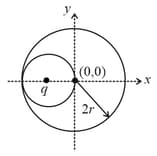
Assertion: Due to two point charges electric field and electric potential cannot be zero at some point simultaneously.
Reason: Field is a vector quantity and potential is a scalar quantity.
Two point charges and are placed some distance apart. If the electric field at the location of be , then that at the location of will be
Two equal positive charges are placed at the vertices and of an isosceles triangle of base and height , as shown in the adjacent figure. When a charge is placed at it is found that at a point inside the triangle, the net electric field due to the three charges vanishes. If this point is at a height then what is ?
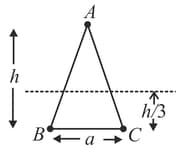
The tracks of three charged particles in a uniform electrostatic field are shown in the figure. Which particle has the highest charge to mass ratio?

If the flux of the electric field through a closed surface is zero then
A metallic shpere is placed in a uniform electric field. The line of force follow the path(s) shown in the figure as,
The maximum field intensity on the axis of a uniformly charged ring of charge and radius will be
A thin conducting ring of radius is given a charge . The electric field at the centre of the ring due to the charge on the part of the ring is . The electric field at the centre due to the charge on the part of the ring is
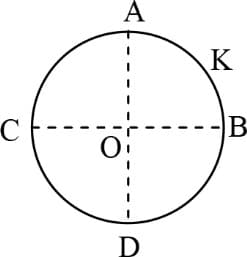
The tracks of three charged particles in a uniform electrostatic field are shown in the figure. Which particle has the highest charge to mass ratio?
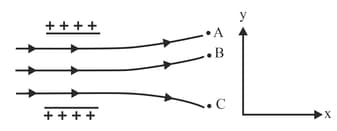
Two point charges of and are apart where will the electric field strength be zero on the line joining the charges from charge
A small metal ball is suspended in an uniform electric field with the help of an insulated thread. If a high energy -ray beam falls on the ball, then the ball
The electric intensity outside a charged sphere of radius at a distance is
The minimum strength of a uniform electric field that can tear a conducting neutral thin-walled sphere into two equal parts is known to be . Then determine the minimum electric field strength required to tear a sphere of one-fourth of the radius with the same wall thickness.
Two mutually perpendicular infinitely long straight conductors carrying uniformly distributed charges of linear densities and are positioned at a distance from each other.
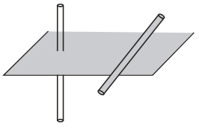
Force between the conductors depends on as
An electrostatic field line leaves at an angle from point charge and connects with point charge at an angle (and are positive) see figure below. If and then


